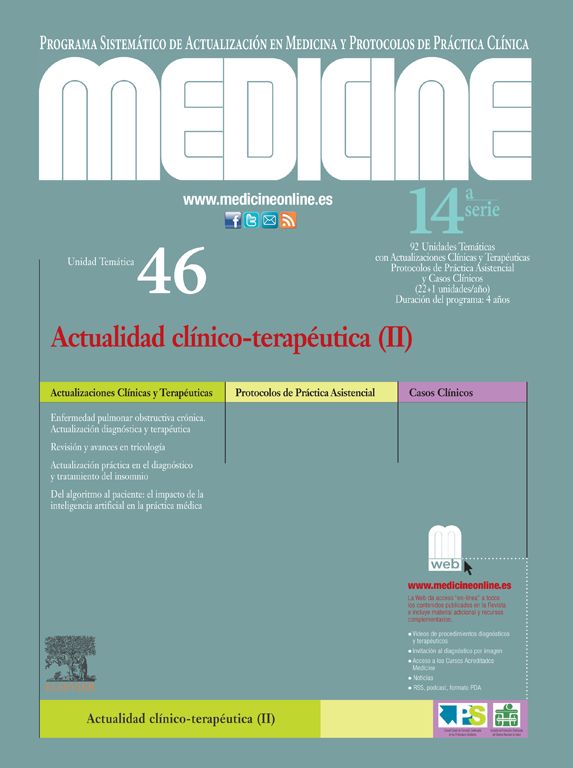Las miopatías inflamatorias (MI) son un conjunto de enfermedades de naturaleza autoinmune que afectan fundamentalmente al músculo, al pulmón y a la piel.
CaracterísticasLa enfermedad pulmonar intersticial (EPI) es la afectación pulmonar más característica de estos pacientes y una de las manifestaciones de la enfermedad que más morbimortalidad ocasiona. Además de EPI, estos pacientes pueden presentar síntomas respiratorios secundarios a afectación pleural (derrame pleural, neumomediastino o neumotórax), hipertensión pulmonar, infecciones por diversos microorganismos o neumonitis inducida por los fármacos inmunodepresores que se emplean en el tratamiento de la MI.
EvoluciónEl riesgo de desarrollar EPI y la evolución de la misma se asocian en gran medida al tipo de autoanticuerpo que presente el paciente, por lo que su detección tiene valor no solo diagnóstico sino también pronóstico.
DiagnósticoAparte de los autoanticuerpos, en un paciente con MI y disnea las dos pruebas diagnósticas más útiles son la tomografía computarizada de alta resolución y las pruebas funcionales respiratorias.
TratamientoEl tratamiento de la EPI en estos pacientes se basa en los glucocorticoides, acompañados de otros fármacos inmunodepresores adyuvantes como azatioprina, micofenolato, ciclosporina A, tacrolimus, rituximab o ciclofosfamida.
Palabras clave
Inflammatory myopathies (IM) are a group of autoimmune diseases affecting mostly the muscles, lungs and skin.
CharacteristicsInterstitial lung disease (ILD) is the most characteristic lung involvement in these patients and one of the manifestations of the disease that causes the highest morbidity and mortality. Besides ILD, these patients could show respiratory symptoms secondary to pleural involvement (pleural effusion, pneumomediastinum or pneumothorax), pulmonary hypertension, infections by multiple microorganisms or drug-induced pneumonitis caused by the immunosuppressive agents used for treating IMs.
EvolutionThe risk of developing ILD and its course are greatly associated to the type of antibody present in the patient, thus its detection not only has a diagnostic but also a prognostic value.
DiagnosisAside from the antibodies, the two most useful diagnostic tests in a patient with IM and dyspnea are high-resolution computerised tomographies and pulmonary function tests.
TreatmentTreatment of ILD in these patients is based on glucocorticoids, together with other adjuvant immunosuppressive agents such as azathioprine, mycophenolate, cyclosporine A, tacrolimus, rituximab or cyclophosphamide.
Keywords
Identifíquese
¿Aún no es suscriptor de la revista?
Comprar el acceso al artículo
Comprando el artículo el pdf del mismo podrá ser descargado
Teléfono para incidencias
De lunes a viernes de 9h a 18h (GMT+1) excepto los meses de julio y agosto que será de 9 a 15h



